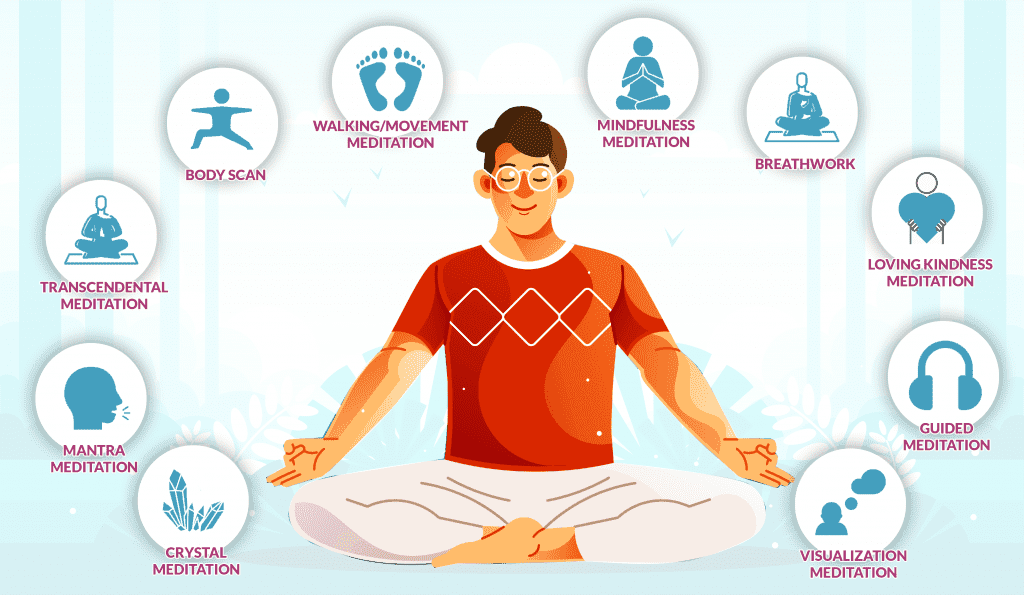
In this blog post, we’re going to explore 10 different ways to meditate, learning about the various types of meditation & even highlighting some great meditation tools to help you fully enjoy your sessions.
Now we know that while sitting in stillness is a form of meditation that’s been used for centuries, it’s not the only way to practice Zen.
There are many ways to involve yourself. Just about anyone can find one (or more) types of meditation styles that align with lifestyle and choice preferences.
So whether you’re experienced or a beginner, find which one is good for you.
Reasons to Explore Different Ways to Meditate
Meditation involves a safe and holistic way to help improve your physical, mental, and spiritual well-being. Those who incorporate meditation into their daily routine experience higher levels of inner peace, calm, and balance.
Scientific studies and research continue to add to the body of evidence supporting meditation’s mental health and physical and spiritual benefits.

Physical Benefits
Meditation helps us enter a calmer state and can even take us from the “fight-or-flight” state caused by excessive stress, worry, or fear.
Physically, various types of meditation can help:
- Reduces Stress
- Lower resting heart rate
- Lower blood pressure
- Improve sleep quality
- Manage symptoms of chronic conditions

Mental Benefits
The calm, focused state achieved during meditation can help slow the constant stream of thoughts passing through the mind. As a result, we become in tune with the present moment, aware of how our thoughts and emotions affect us.
Mentally, various types of meditation can help:
- Reduce negative emotions
- Increase self-awareness
- Reduce anxiety
- Decrease impulsivity and reactivity
- Improve creativity
- Increase patience and tolerance
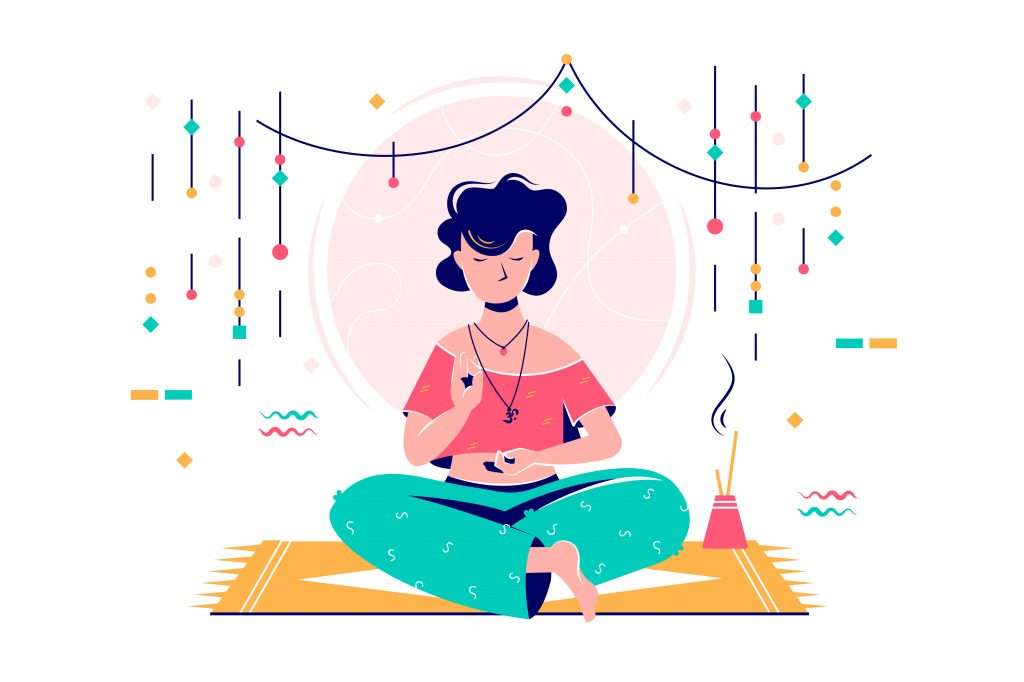
Spiritual Benefits
The inner peace and wisdom gained from meditation can help develop and grow your spiritual practice. It can even lead to a spiritual awakening.
Spiritually, meditation techniques can help with the following:
- Feeling more connected to a higher power
- Experience more inner stillness and peace
- Feeling more balanced
- Increase feelings of compassion and belonging
- Develop an inner bliss not dependent on external factors
The best part: Meditating for just 10- 20 minutes a session can help overall well-being.
Ready to start meditating?
Different Ways To Meditate- Listing 10 Types to choose from
Some of the different ways and types of meditation techniques mentioned below are not mutually exclusive.
Sometimes combining them can lead to more powerful meditation experiences.
Even though there are so many ways a person can practice their meditation sessions, to keep it short, we’ll stick to 10 various options you can choose from.
So let’s explore at least 10 different meditation techniques and see which one will most likely resonate with you more than the other.
Finding a meditation style that feels right for you is important when starting a practice.
You can explore other ways and types as you develop your technique and meditate better.
This makes meditation more enjoyable and intuitive and seems less like a chore.
1. Mindfulness Meditation

Mindfulness meditation may be what many of us picture when we think of meditation.
This style of meditation involves focusing on the present moment and letting the other thoughts and distractions fade away.
Mindfulness requires mental training. When one begins mindfulness types of meditation, they are often met with the constant distracting chatter of thoughts where the mind wanders-sometimes called the “monkey mind.”
At first, it may seem impossible to quiet the monkey mind. With this practice, patience, repetition, and a non-judgmental approach can help you work through the initial difficulties.
2. Breathwork
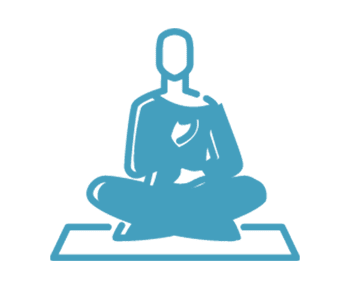
Many ask, is breathwork a form of meditation, and can breathwork replace meditation?
While breathwork can be a form of meditation, it is not the same as traditional types of meditation.
Breathwork is a technique that helps you intentionally focus on your breath.
Altering the breath has many advantages; one is the mind-body system and lowering blood pressure.
While doing breathwork, you usually find it easier to change your mood and thoughts so you feel calmer. The mind usually starts to see things from a different perspective-a more calm and centered approach to life.
Although meditation is often associated with focusing on a particular mantra or object, you’ll notice awareness of who you are from an outside perspective. The session itself, isn’t about intentionally focusing on your breath, as your breath will naturally slow down during the process.
Breathwork is an umbrella term for many breathing exercises and techniques that require you to change your breathing pattern. Which involves clearing negativity from the body. These types of meditation also include practices like pranayama, qigong, and yoga.
There are quite a few different styles of breathwork techniques, including but not limited to:
Box breathing
Alternate nostril breaths
Pursed lip breathing
In addition to these, breathwork can be done with the eyes open. Many types of meditation are usually done with the eyes closed.
Breathwork allows you to be more in tune with your moment in time.
Both breathwork and meditation normally help to induce a state of calmness, which is beneficial for stress relief.
As a result, it’s an effective tool for both physical health and mental wellness.
Whether breathwork is new to you or you’ve been practicing for years, there’s many advantages to this powerful practice.
While many find meditation calming, some still find it difficult to tame their thoughts. So particular breathwork techniques may be an easier option for finding calmness and peace in everyday life.
3. Loving Kindness Meditation

Loving Kindness Meditation is a form of mindfulness meditation. The object is to focus on positive emotions such as kindness, compassion, and love.
The goal is to eventually extend these feelings to all beings, even those who might be somewhat difficult to love.
This practice also helps to increase feelings of social connectedness and conscious awareness of one’s well-being.
So, if you’re interested in trying Loving Kindness Meditation, here’s some things you can do to get you started.
First, find yourself in a comfortable position either to sit or lie down.
Then, begin by focusing on your breath.
Once you’ve settled down ready to begin, start to silently repeat phrases similar to:
“May all beings be happy and safe”
“Let me be filled with loving kindness.”
And as you repeat these phrases, picture the people or animals to who they apply to.
It’s another great way for feeling good. It also helps to clear any negativity that might be held within the body through any connections you’ve had with people or experiences you don’t feel good about.
4. Guided Meditation

A guided meditation is a technique where you actually listen to and follow specific instructions during the session.
The instructions serve as guiding the individual throughout the meditation experience. An instructor recites each step to help your thoughts remain focused as opposed to distracted during the meditation.
A guided session can be in either person, through video recordings, audio downloads, and many software apps.
Those of any experience level can participate in these guided sessions. Even though they’re most helpful for beginners they’re still a great support mechanism for keeping the mind focused on the session itself.
5. Visualization Meditations

Your imagination can be a very powerful tool. A visualization meditation encourages you to concentrate on a mental image or scene to help center your mind and body.
These types of meditation also often have a goal or can be used for reducing anxiety, feeling calmer, or developing compassion. Combining creativity within these meditation sessions can help you focus and gain some insights.
For example, you could picture yourself sitting on the beach. And, as the waves wash up on your feet, just imagine the waves taking negative thoughts or emotions back into the sea.
Keep doing the visualization until you feel quite clear of negative feelings.
For the beginner, visualization techniques are usually combined with guided audio to help stay focused during the session.
6. Walking - Movement Meditation

Some people can find it challenging to sit still when practicing meditation. So, instead of fighting it, mindful walking or moving can also provide a rewarding and relaxing alternative to sitting.
When you pay close attention to each movement you take, you bring more mindfulness into each step of the way. It also helps the mind to keep focused within the present moment.
For example, while doing this style of active meditation, you may count your footsteps and pay attention to the physical sensations of your feet touching the ground each time.
Movement mediation can be as involved as yoga sessions, or it can be as simple as paying more attention to the physical sensations as you wash dishes.
7. Body Scan Meditation

During the body scan meditation, you normally pay attention to each part of your body for a short time.
Sometimes you may breathe relaxation and even release tension in any of the areas.
Other times, you can mindfully give each area particular attention, non-judgmentally notice how each part of your body feels.
8. Transcendental Meditation
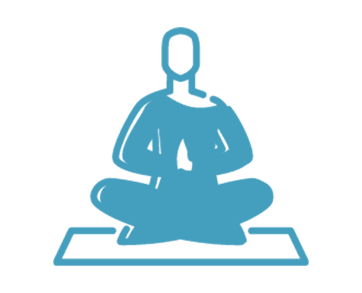
Many ask what is the difference between mantra and transcendental meditation?
The mantra is like a vehicle that helps us calm our mind and go beyond the limitations of our own thinking minds and into a state of pure consciousness.
Both mantra meditation and TM (transcendental meditation) involve using either a sound or a word to relax the mind into a state of peace and calm, going beyond pure consciousness. Still, there are some key differences between the two practices.
In TM, the mantras are usually not words but sounds without meaning. This usually helps the individual not to analyze the word, but transcend thought to reach a higher state of consciousness.
Mantra type of meditation normally involves the repetition of a sacred word or a phrase to help focus the mind on achieving a state of relaxation.
One major difference is that practitioners of TM give a specific mantra to be used during the meditation.
In contrast, those who practice mantra meditation can choose their own mantra or word to repeat.
9. Mantra Meditation

A manta session normally involves repeating a word or phrase while being still. It helps with redirecting your thoughts to the here and now, keeping you focused.
These meditation techniques can also help to shift the mood and mindset.
Mantras can be as simple as words like:
Peace
Hope
Calm
I am worthy
I am focused
I am loved
Other mantras have been used throughout the centuries by religions and cultures to cultivate the connection with the Divine. As well as strengthen the “mind-heart connection.”
10. Crystal Meditation

Crystal meditation is another great tool for personal growth and used in metaphysical healing. Some enjoy the experience of feeling more grounded while they feel connected to mother Earth, and the natural world around them.
One way is by sitting comfortably, close your eyes, and focus on your breath. As you breathe in and out, imagine the crystal drawing any negative energy away from your body and mind and releasing it back into the Universe as it dissipates.
Various Ways to meditate with crystals
Here are a few ways to use your spiritual stones for crystal meditation:
- Place a grid of crystals around you
- Wear as jewelry or amulet in meditation
- Use breathwork on your favorite crystal as a focal point
- Place crystals on the seven chakra points or focus on one chakra center
This way, you can choose a crystal corresponding to a particular chakra for energy healing and balancing.
For example, you can choose pink rose quartz to focus on your heart area. The key here would be to focus on the crystal and feel its energetic vibration around your heart center intuitively.
With rose quartz, you are intuitively inviting the loving vibrations of this crystal to surround your heart chakra. Bringing light and love into your life and channeling blessings of love to surround the people that are dear to you.
If you like, here’s the link to a guided rose quartz meditation for healing the heart chakra.
Meditation Tools to Explore Different Ways to Meditate
What tools are used for meditation?
While there are many different meditation techniques, some tools help elevate the experience itself.
Meditation Music
One way to create a serene atmosphere is by playing meditation music in the background.
This type of music usually incorporates soft melodies with natural sounds, such as rain or ocean waves.
Using solfeggio frequencies that correspond to each energy center for chakra meditations can help elevate the spiritual experience.
Other meditation tools include candles, incense, and crystals.
Candles
Candles can provide light and energy for people who like candle gazing during meditations or create that ambient setting.
There are even special meditation candles with various scents and colors that are said to promote different effects.
For example, lavender is often used for relaxation, while white candles can be used for purification.
If like the idea of candles, here are some amazing chakra candles set, with a crystal in each candle.
Incense and Essential Oils
Incense can help to create a sacred space in a well ventilated environment.
You can also use aromatherapy diffusers with fragrant essential oils. This all helps with setting the right mood for your meditation session.
Here’s a great diffuser, that’s quite popular, comes with aromatherapy essential oils, in case this idea appeals to you!
Spiritual Stones
Spiritual stones such as crystals can help you focus on bringing in positive energy and manifesting, helping with the healing process and creating a sense of grounding.
Not only do crystals from mother earth promote a beautiful feng shui experience, but they also create an overall nurturing environment filled with lots of color and light.
Incase you’re trying to find some healing crystal kits for chakra and meditation, here’s one you might like, it’s quite popular. It’s also one of my favorites to use.
Meditation Furniture
Comfort can be the key when practicing meditation, which is why many people use furniture like padding, mats, and chairs with back support.
Furniture can help you maintain the correct posture for the breathwork, part of meditation, and protect you from discomfort caused by hard floor surfaces or sitting in the same position for more extended time frames.
You can add some meditation furniture depending on your budget, style, and comfort levels.
For example, some options can be things like:
Create a unique space conducive to relaxation, healing, and manifesting, using some or all of these tools above for your meditation session.
Final Thoughts
Practice, practice, practice!
Now out of these 10 different types of meditation techniques, you’ll surely find one that resonates with you. When you do, then work it into your daily routine.
But remember, you don’t need to stick with a single meditation technique. Feel free to explore other techniques as your meditation practice grows.
You may find that one meditation works very well for a while, and then you may have to try something else. Or maybe a technique you didn’t like initially becomes your favorite meditation practice.
Keep an open mind and heart. Use your inner guidance to find new methods to explore.
Disclaimer: Our web pages and blog posts provide general information for general purposes only and not to be used for any medical, legal or alternative health advice for any type of physical, mental health or financial concerns.Always speak to your practitioner before embarking on any new alternative treatments. If you have concerns about any medical matters, you should always consult your healthcare provider without delay.We thank you for taking full responsibility for your own health and wellbeing in life. ☺



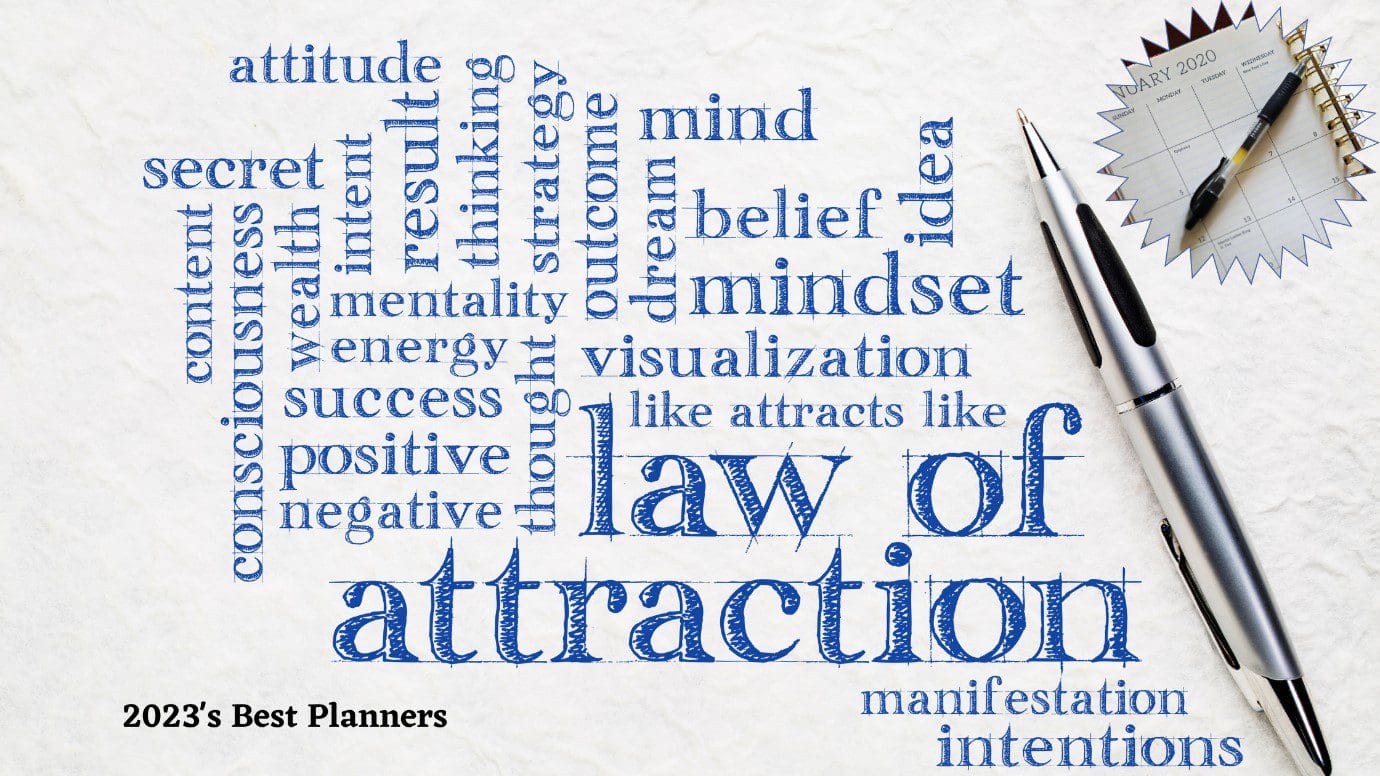



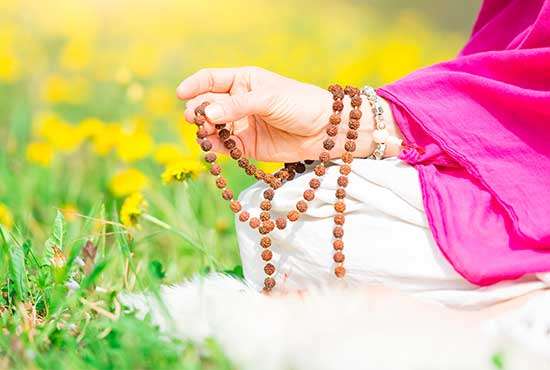




 Self Care Tips
Self Care Tips